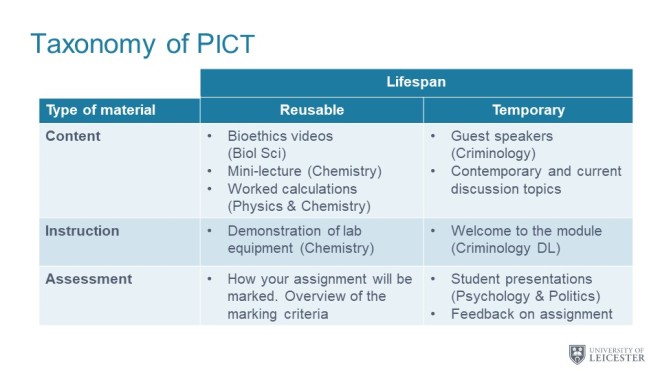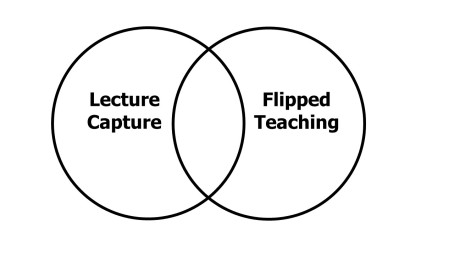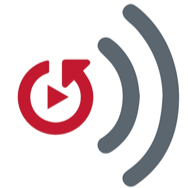Back in 2018 my colleague Matt Mobbs from the Leicester Learning Institute and I undertook a project to identify innovative uses of our institutional lecture capture (LC) system, in our case Panopto.

An outline of the variety of Pedagogies Involving Capture Technology at the University of Leicester (in 2018). The uses are discussed more fully in the text.
Universities around the world have invested huge amounts in both the software and associated hardware to facilitate the recording of lectures, which can subsequently be made available for student to watch asynchronously. A whole conversation already exists around best practice in use of the LC systems for this primary function. In this project, however, we were more interested in innovative uses of the technology over and above the standard recording of large venue, and largely didactic, teaching; we wanted to know about Pedagogy Involving Capture Technology (PICT) beyond the classroom. With the help of our research assistant Gemma Mitchell (now University of York), we carried out a series of interviews with staff at the University of Leicester to find existing examples of good practice, with a view to producing a guide for the benefit of the wider community. Continue reading



 We have been using lecture capture for about two years. I have to say at the outset that I am a big fan. Having said that however, there are aspects of lecture capture that I find problematic. Here I offer some quick and dirty reflections on my experience of lecture capture so far. This is not a scientific study, and I certainly haven’t gone away and done an extensive literature search, so I may well be rediscovering old truths.
We have been using lecture capture for about two years. I have to say at the outset that I am a big fan. Having said that however, there are aspects of lecture capture that I find problematic. Here I offer some quick and dirty reflections on my experience of lecture capture so far. This is not a scientific study, and I certainly haven’t gone away and done an extensive literature search, so I may well be rediscovering old truths.
